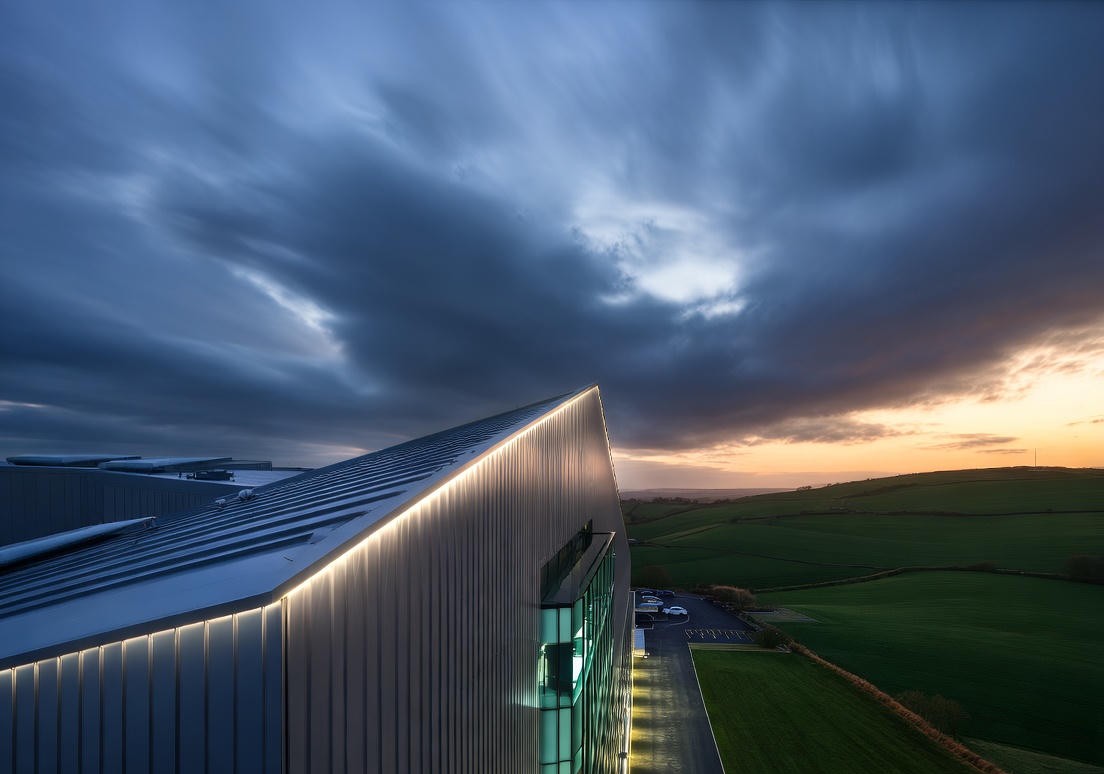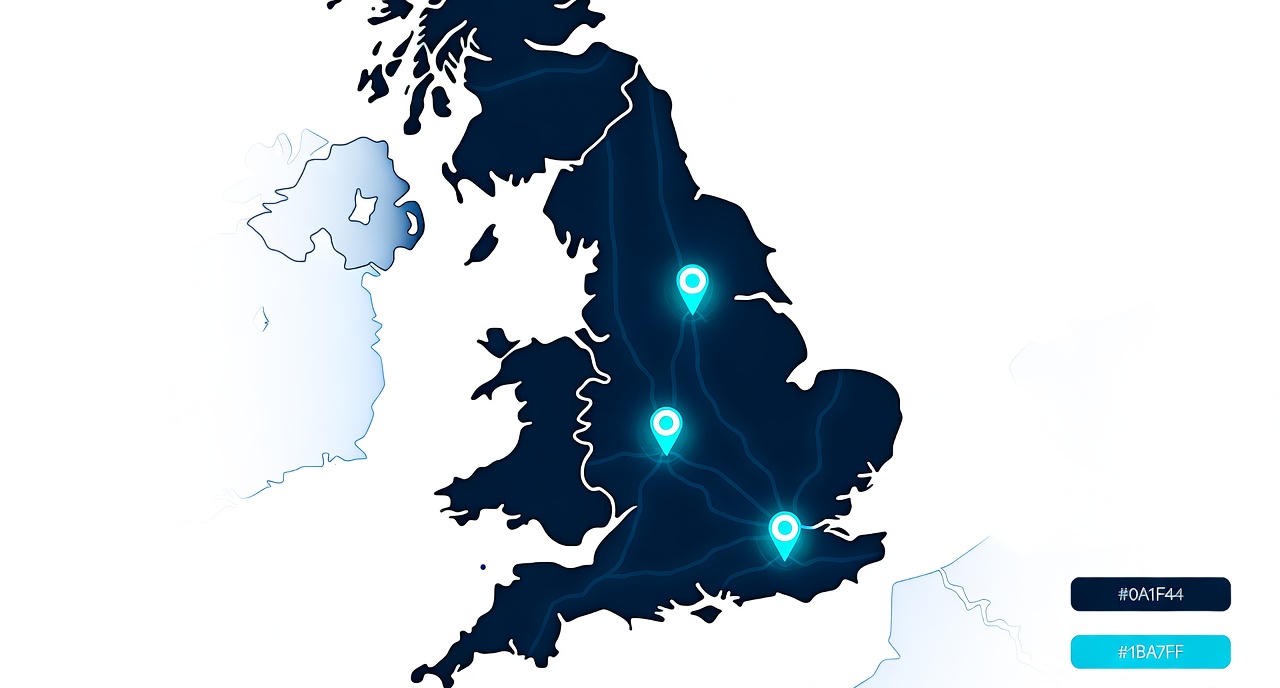Data Centre Construction Projects UK: 2025 Market Analysis & Growth Forecast
Data Centre Construction Projects UK: 2025 Market Analysis & Growth Forecast
Are you tracking Data Centre Construction Projects UK: 2025 Market Analysis & Growth Forecast to plan budgets, bids, or hiring?
The short answer is clear: demand is surging, power is the bottleneck, and delivery will favour teams that secure equipment and talent early.
Read on for a concise forecast, regional pipeline highlights, salary/day‑rate benchmarks, and procurement moves that actually de‑risk schedules.
Executive Summary: 2025 Snapshot
The UK data centre construction market is expanding on the back of AI and cloud growth.
London vacancy is tight while new capacity lands unevenly across 2025.
Sponsors that lock power, transformers, commissioning talent, and UPS early are winning the schedule.
- Demand is led by AI workloads with higher rack densities and resilient power expectations.
- Power availability and grid connection timing are the decisive constraints for start dates.
- Equipment lead times and commissioning capacity shape the critical path more than concrete or steel.
- 2025–2026 outlook remains bullish in London/Slough and Manchester, with emerging North East pockets.

Demand Drivers in 2025
AI training and inference are driving larger, denser halls and accelerated refresh cycles.
Hyperscalers continue to expand while colocation providers race to pre‑commit power.
Latency‑sensitive enterprise and public sector workloads keep regional sites relevant even as London dominates megawatts.
Critical National Infrastructure designation boosts investor confidence and prioritises grid upgrades.
ESG and power pricing are shaping locations, cooling choices, and PPA strategies.
Supply Constraints & Delivery Timelines
"Time to power" now determines whether a shovel‑ready site can actually start.
Distribution network upgrades and substation capacity decide sequencing and phasing.
Transformer lead times that once were months are now measured in years, forcing early procurement and portfolio buys.
Generators, UPS, and chillers/HVAC require long‑lead planning and order placement at concept design.
Planning remains nuanced, with local policies on visual impact, water, and noise affecting program risk.

Regional Hotspots & Pipeline
London / Slough / West London Corridor
London remains the epicentre for Data Centre Construction Projects UK: 2025 Market Analysis & Growth Forecast momentum.
Vacancy is historically low, with take‑up and capacity deliveries staying high through 2025.
Power constraints lift premiums for high‑voltage and UPS expertise, and drive creative phasing/energisation.
Manchester / Greater Manchester
The North West shows a £600m+ active pipeline with flagship 40MW‑class builds.
Local authorities are supportive, and fibre connectivity is strong enough to land hyperscale‑adjacent schemes.
Manchester's programme visibility makes it a magnet for commissioning and MEP talent.
North East & Emerging Regions
Policy support and site availability position the North East as a credible second‑wave market.
Developers are exploring phased power strategies and heat‑reuse opportunities to accelerate approvals.

Live & Announced Projects to Watch (Illustrative)
Manchester – Kao Data (c.40MW)
Capex in the hundreds of millions with 4,000+ racks positions this as a bellwether for North West delivery capacity.
Completion milestones extend into 2027–2028, underscoring long power and commissioning critical paths.
Salford – New Data Centre (c.£250m / 56,000 sq ft)
Investment signals confidence in sustained demand beyond London.
Stakeholder management and planning interfaces are central to the schedule.
Buckinghamshire – CyrusOne Iver Heath (90MW campus)
A billion‑pound‑plus investment with ground‑break targeted in the medium term demonstrates scale and grid dependency.
Expect extensive early procurement of transformers and switchgear to protect the critical path.

Cost, CapEx & Schedule Benchmarks (Owner's View)
Owners are budgeting with higher allowances for power works and commissioning resources.
Shell & core costs remain manageable relative to MEP and electrical packages.
Risk contingencies are shifting toward grid connection, equipment, and testing/commissioning.
A typical 30–40MW new‑build can span 24–36 months from concept to practical completion depending on power availability.
Commissioning windows are stretched to secure talent and test equipment at density.

Talent, Salaries & Day Rates (URecruit Intelligence)
URecruit sees sustained premiums for commissioning and specialist MEP roles across 2025.
Senior experience commands 2× junior rates in hard‑to‑fill disciplines.
Commissioning pay remains significantly above general construction averages.
Salary & Day Rate Benchmarks
- Construction Project Manager (Data Centre): £65,000–£75,000 or £300–£400/day
- Senior Project Manager: up to £95,000
- Data Centre Project Manager: ~£58,200 average, range £35,970–£105,000
- Data Centre Engineer: ~£46,250 median, typical range £45,915–£60,067
- MEP Engineer (DC specialist): £113,000–£200,000+ for experienced professionals
- Senior MEP Engineer: £80,000–£85,000
- Commissioning Engineer: ~£88,684 or ~£579/day (median contract ~£388/day)
- Commissioning Manager: ~£122,917 or ~£693/day
- Senior commissioning roles can command a 67% premium vs. other industries
- MEP Quantity Surveyor: £80,000–£85,000
- Senior QS (Data Centre): £70,000–£80,000
- Commercial Manager: ~£113,833 average
- Health & Safety Advisor (Data Centre): £55,000–£65,000

Procurement & Delivery Models
Sponsors are moving beyond single‑GC models to major package procurement that pulls critical items forward.
Early supplier involvement enables transformer, UPS, and generator orders at concept stage.
Portfolio‑level buying improves allocation probability and unit pricing for long‑lead items.
Contracts are evolving to clarify commissioning acceptance criteria and multi‑party interfaces.
Sustainability & Power Strategy
Power sourcing mixes grid, PPAs, and on‑site generation for resilience and carbon goals.
High‑density cooling and heat reuse are moving from pilots to program baselines.
Embodied‑carbon tracking for MEP is gaining weight in investment committees.
Reporting frameworks are tightening, requiring auditable data and continuous improvement plans.
2025–2028 Growth Forecast Scenarios
Base Case (most likely)
Capacity additions remain strong in London/Slough and Manchester with vacancy trending tight through 2026.
Grid upgrades pace deliveries, while early procurement narrows schedule risk.
Talent demand stays elevated, with commissioning as the rate‑setting role group.
Upside Case
Accelerated grid investment and planning clarity bring forward energisation dates and unlock additional sites.
Heat‑reuse and efficiency wins improve planning outcomes and community acceptance.
Downside Case
Transformer scarcity persists and planning timelines extend, pushing handover into later phases.
Financing costs stay elevated, compressing speculative builds and favouring pre‑let projects.
Risks & Mitigations Checklist (For Sponsors & Contractors)
- Power connection timing: lock capacity early, consider staged energisation and temporary generation
- Equipment lead times: place transformer/UPS/generator orders at concept; maintain portfolio relationships
- Labour availability: pre‑build commissioning and MEP talent benches with overlapping mobilisations
- Planning uncertainty: engage early with local authorities on visuals, water, sound, and grid coordination
How URecruit Helps Sponsors & Contractors Win in 2025
URecruit builds fast‑fill shortlists for commissioning, MEP, and project leadership roles aligned to critical path dates.
We operate salary/day‑rate dashboards so sponsors can approve budgets quickly and win candidates.
We maintain regional pipeline alerts and lead‑time trackers to help sequence procurement and staffing.
Here's a sample hiring timeline for a 40MW build: design sign‑off (month 0), long‑lead orders (month 1), PM/QS hires (month 2), MEP/controls (months 4–10), commissioning wave (months 14–20), readiness/IST (months 20–24).
Frequently Asked Questions
How many data centres are there in the UK?
The UK hosts hundreds of facilities across colocation, wholesale, and enterprise footprints concentrated in London/Slough and major regional hubs.
Vacancy is low in London while new capacity lands through 2025, keeping pipelines active.
This context supports further Data Centre Construction Projects UK: 2025 Market Analysis & Growth Forecast investment.
Where are data centres being built in the UK in 2025?
Most new megawatts are focused on West London/Slough and Greater Manchester, with emerging North East activity.
Schemes are prioritised where power and fibre are available and planning is favourable.
Sponsors are phasing builds around energisation schedules.
What is driving data centre construction in the UK?
AI and cloud growth, low London vacancy, and enterprise modernisation drive demand.
Investor confidence is reinforced by critical‑infrastructure status and long‑term digital economy trends.
Power availability ultimately gatekeeps site selection.
What are the main challenges to building data centres in the UK?
Grid connection times, transformer/UPS lead times, commissioning talent availability, and planning conditions are the big four.
Owners mitigate risk by early procurement, portfolio buying, and robust commissioning plans.
Regional engagement and heat‑reuse can help with approvals.
How long does it take to build a data centre in the UK?
A typical 30–40MW facility can span 24–36 months from concept to PC depending on power and planning.
Commissioning duration is a critical variable, often extending schedules to secure the right teams.
Early equipment orders shorten the long pole on the schedule.
How much power does a UK data centre use?
Modern AI‑ready facilities plan for high rack densities and resilient N+1 or N+2 topologies.
Power use varies by design and tenant mix, but power reservation is the governing constraint in 2025.
This drives PPAs, grid upgrades, and careful phasing.
How much does it cost to build a data centre in the UK?
Costs are dominated by power infrastructure, UPS/generators, and cooling, with shell & core a smaller share.
Sponsors build in contingencies for long‑lead items and commissioning to protect budgets.
Owner's requirements and density targets can swing cost by double‑digit percentages.
What is the outlook for the London data centre market in 2025?
Outlook remains strong with tight vacancy and meaningful capacity additions.
Competition for power and commissioning talent will continue to set pricing.
Schedule winners lock critical resources early.
Are UK planning rules changing for data centres?
National policy is trending more supportive given economic importance, but local considerations still matter.
Visual, water, and noise conditions, plus power coordination, remain central to approvals.
Stakeholder engagement and heat‑reuse improve outcomes.
What is the growth forecast for the UK data centre construction market?
Base case is continued growth through 2026 with London and Manchester leading starts and deliveries.
Upside depends on faster grid upgrades and planning clarity.
Downside risk is prolonged transformer scarcity and planning delays.
Conclusion
Data Centre Construction Projects UK: 2025 Market Analysis & Growth Forecast points to sustained demand with power and commissioning as the rate‑setters.
Teams that secure long‑lead equipment and talent early will deliver faster and with fewer budget surprises.
If you need salary bands, day‑rate ranges, or commissioning shortlists for live bids, we can help.
Contact URecruit to build the talent roadmap that matches your power and delivery milestones.

Tom Karl
Senior Consultant
Tom Karl specializes in market analysis and has extensive experience in construction recruitment across the UK and Europe.
Ready to Take the Next Step?
Explore our current opportunities or get in touch with our specialist recruitment team to discuss your career or hiring needs.